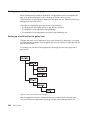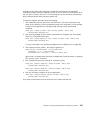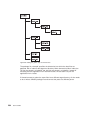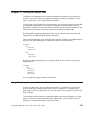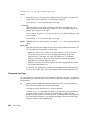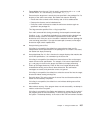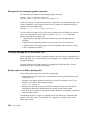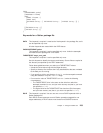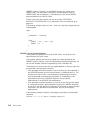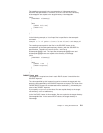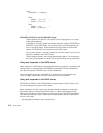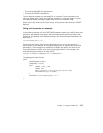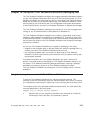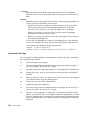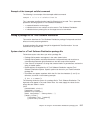TARGET keyword. The files in the SOURCE directory are copied to the
TARGET path. The target path is derived by concatenating the value of
TARGETROOT with a backslash (\), followed by the value of the TARGET
keyword specified in the RULE clause.
A RULE clause can also contain one user exit clause: EXITPRIOR,
EXITPOST, or EXITREPLACE. For a description of the exit keywords, go to
page 212.
The following example copies all *.exe, *.cmd, and *.hlp files to target directory
f:\demoapp\bin.
(DATA
.
.
(TARGETROOT f:\demoapp )
.
.
(RULE
(SOURCE *.exe *.cmd *.hlp)
(TARGET bin )
)
.
.
)
SOURCE <list of file specifications>
This keyword is required once for each RULE clause. It must be the first
keyword within the RULE clause.
This keyword specifies the files to be copied to the path specified by the
TARGET keyword. Specify a list of file specifications separated by blanks. You
can use the wildcard characters supported by OS/2 or Windows NT.
The directory from which these files are copied depends on how the input files
are specified in the teamcpak command:
v If the teamcpak command specifies a source directory, the files specified in
the SOURCE keyword come from that directory or subdirectories of it. The
full path of the source files is constructed by concatenating the directory
from the teamcpak command with a backslash (\), followed by the file
specifications found in the SOURCE keyword. You can specify
subdirectories in the SOURCE file specifications.
v If the teamcpak command specifies a list of files, these files are first copied
to a temporary directory, then copied from there to the TARGET directories.
In this case, you can use OS/2 or Windows NT wildcards to specify multiple
file names in the SOURCE file specifications, but you cannot specify
subdirectories.
In the following example, directory d:\demoapp is specified on the teamcpak
command:
teamcpak -o "-x -t -m" gather d:\demoapp demoga.pkf
210 User’s Guide



